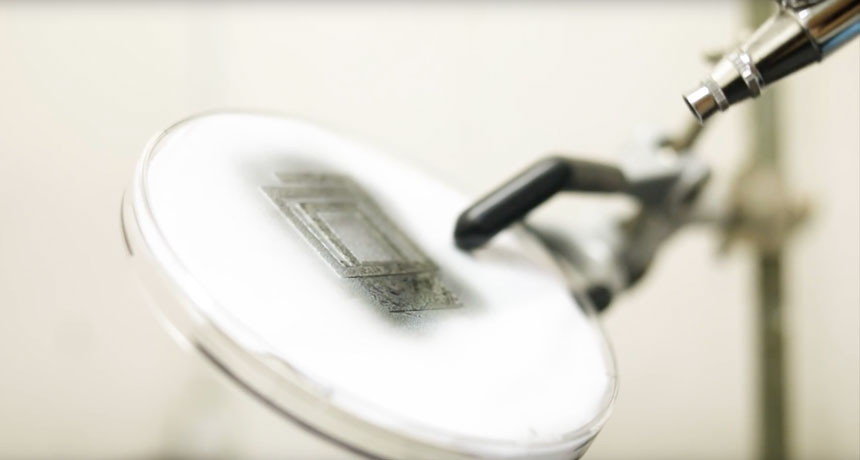
ANTENNAS EVERYWHERE 2-D flakes of metallic material (sprayed onto polyester sheet above) could be painted onto household appliances or printed onto clothing-embedded electronics to create radio antennas that bring these devices online.
Kanit Hantanasirisakul/Drexel Univ.